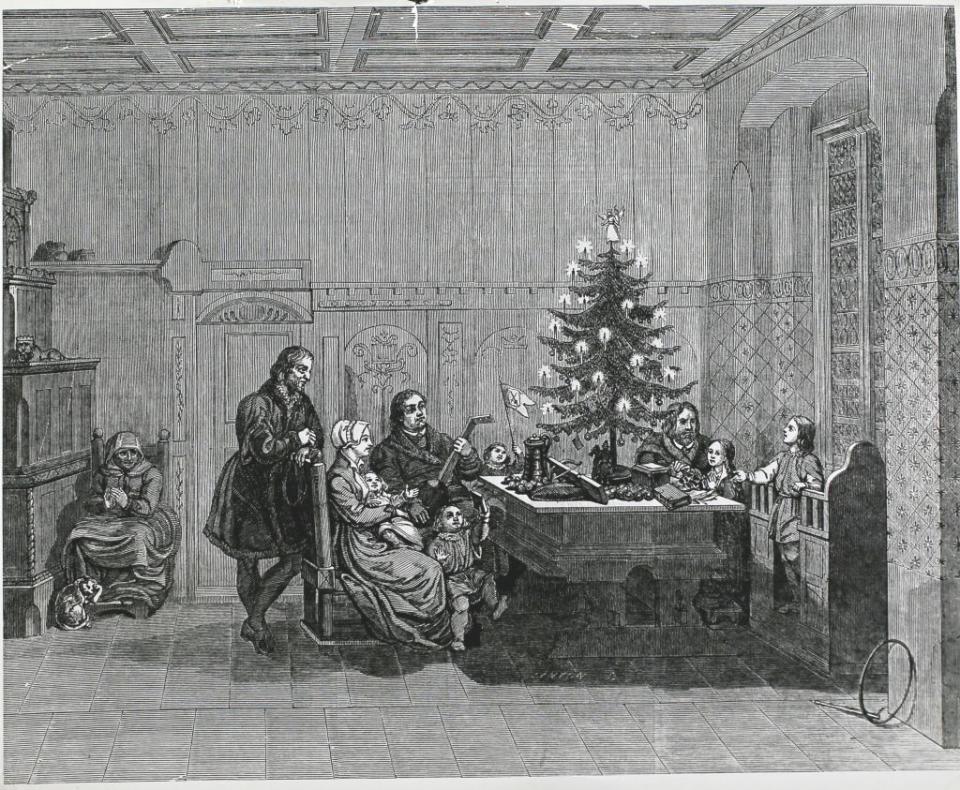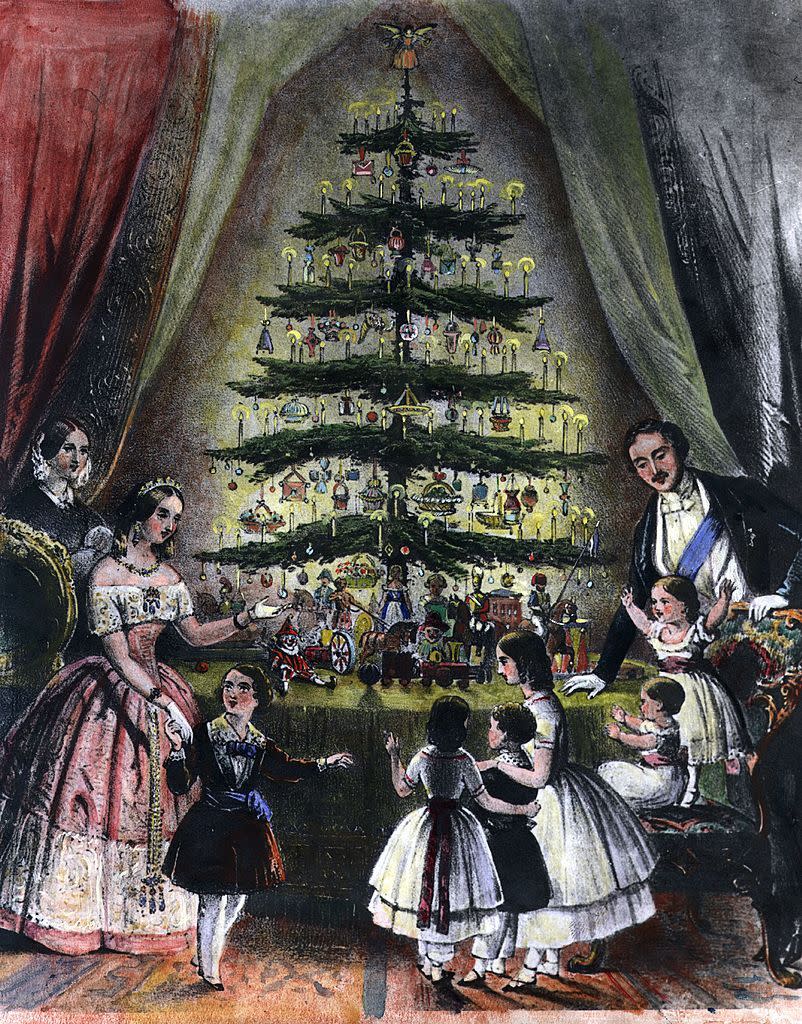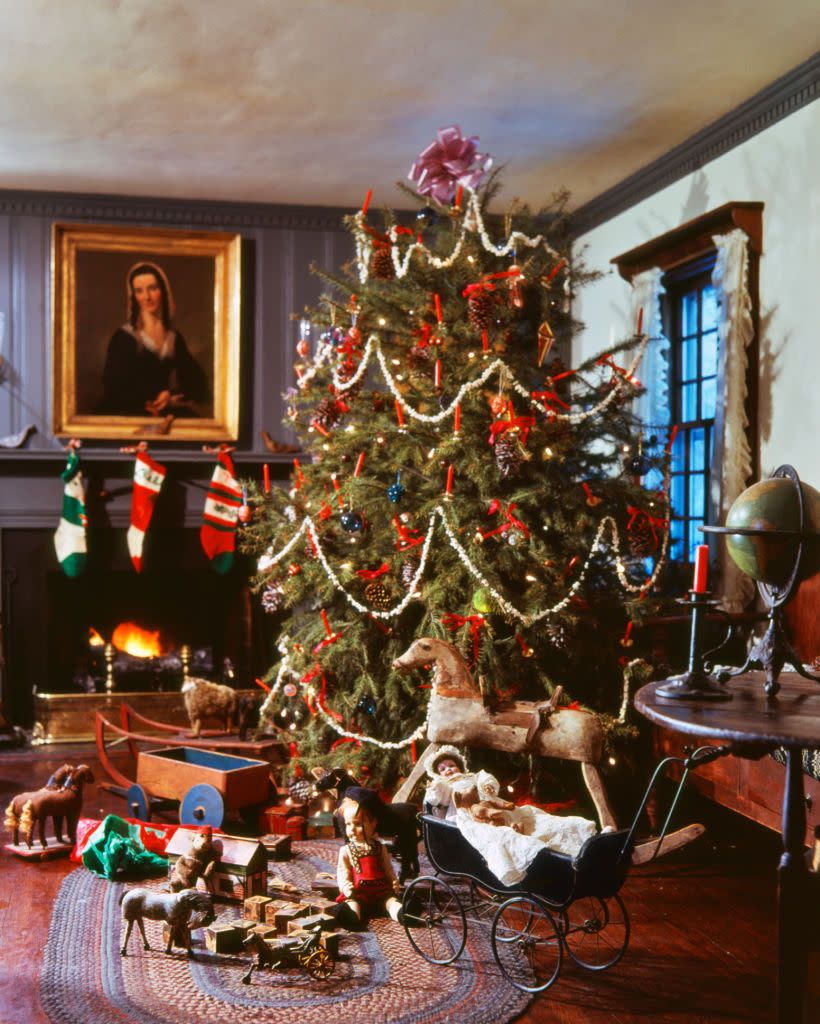The History of the Christmas Tree Goes Back Farther Than You Might Realize

"Hearst Magazines and Yahoo may earn commission or revenue on some items through the links below."
Long before Christmas trees were considered the decor for the holidays, they were simply humble, fragrant evergreens that served as a source of joy during the harsh winter months. But what does the Christmas tree symbolize? How did it evolve into one of the most celebrated icons of the season? Here, we'll take you through the most useful—and interesting—Christmas tree history. (And if you're curious for even more Christmas trivia and fun facts, here's the origin of "merry Christmas" and why we say it and the true story behind the beloved song "White Christmas.")
What does the Christmas tree symbolize?
In ancient cultures, the winter solstice was heralded as the beginning of brighter days ahead, an indication that the Sun God was regaining strength. Because evergreen trees retain their color through all four seasons, they were displayed and embraced in coordination with the solstice as a reminder of warmer months to come.
In Egypt, a similar mindset was adopted. The Sun God, Ra, typically grew weak as conditions became colder and darker. The solstice was seen as the turning point in seasons, so Egyptians decorated their homes with palm leaves and branches. Similarly, in ancient Rome, a feast called Saturnalia was held during the solstice, which also encouraged people to celebrate the springtime (and bountiful harvest) ahead with evergreen decorations.
When did Christmas trees originate?
The true Christmas tree tradition can be traced to 16th-century Germany, where Christians began to decorate trees—or, if times were tough, simple pyramid-shaped stacks of wood— inside their homes. The tradition of adding candles to the tree branches is most commonly attributed to Martin Luther, leader of the Protestant Reformation movement in the 1500s. (Legend suggests he was inspired by the stars in the night sky and wished to re-create the scene in his own home using candlelight.)

According to A Christmas Cornucopia: The Hidden Stories Behind Our Yuletide Traditions, the first-ever Christmas tree was in London, near what is now Leadenhall Market. However, it seems it was a one-time occurrence, as Christmas trees wouldn't be seen again in Britain until the 19th century.
In what country did the Christmas tree originate? And are Christmas trees religious?
Despite the Christmas tree's roots in Christianity, most Americans refused to adopt the tradition at first because they believed it to be attached to pagan beliefs. The tradition was mostly contained to Germany until the late 1700s and early 1800s. Until then, the Puritans of New England upheld especially strict views of Christmas in America, and people were severely punished if they celebrated or decorated in any way. (They believed the holiday was so sacred that a church service was the only appropriate way to celebrate.) This solemn American observance of Christmas continued until Irish and German immigrants began to settle in America and established their own traditions despite the Puritan rule.

German settlements, particularly in Pennsylvania, decorated community trees in the late 18th century, and soon the trees started to show up in the individual homes of German families. But most of the country was still skeptical. It wasn't until England's Queen Victoria and Prince Albert (who was of German heritage) were shown in a popular newspaper in 1848 standing around a Christmas tree with their family that the tradition became more widely embraced.
Where did the custom of decorating Christmas trees originate?
Other than the candle aesthetic already established in Europe, decorations like ornaments (often imported from Germany) became more popular in the late 1800s, and homemade decorations like cookies and garlands (think: popcorn, berries, nuts, and more) became decorating staples.

As technological and industrial developments progressed throughout the 20th century, the more homespun decorations gave way to glitzy electric lights and synthetic materials, like tinsel. The popular Shiny Brite ornaments, inspired by imported German glass ornaments, marked the beginning of the U.S. ornament industry in the early-to-mid 1900s.
You Might Also Like

